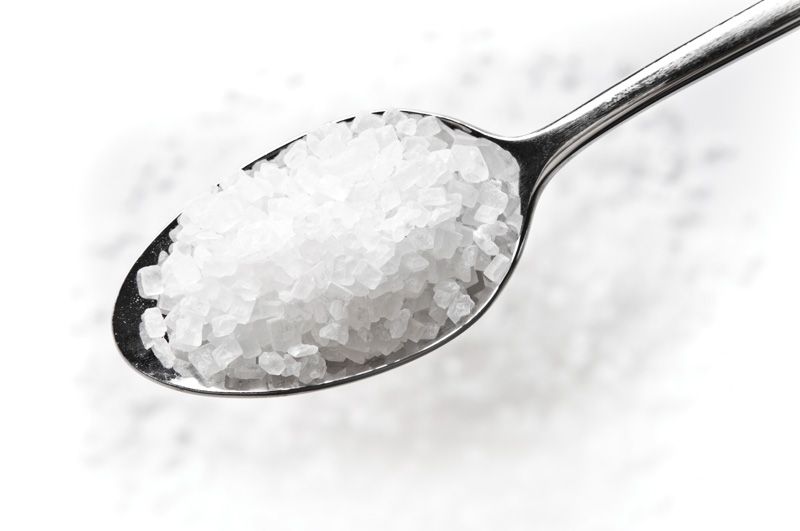Formulating to Reduce Added Sugars
Sweet Feat: Ingredient specialist shares secrets to reducing sugar

By Melanie Goulson, Sweetness Applications Leader, Cargill
There’s no sugar-coating the headlines. Whether it’s FDA’s proposed changes to list added sugars on the Nutrition Facts panel, or the World Health Organization’s (WHO) new March guidelines on reducing sugar consumption, pressure to lower sugar intake continues to mount. Given the environment, it’s little wonder formulators are increasingly exploring options to lower the added sugar in their products.
As a sweetener expert, I'm often asked by companies to help guide their sugar-reduction journey. The first step? Deciding just how low to go.
Critical Considerations
Great taste is paramount for success. Beyond that, today’s competitive marketplace demands the end product be compelling to label-conscious consumers. Some consumers are looking for "reduced sugar" claims. Others may be motivated by a specific label target, like fewer than 100 calories or less than 10 g of sugar per serving.
After determining sugar-reduction goals, it’s time to hit the lab. In beverage applications, formulators first need to calculate the sucrose equivalent value (SEV) of the sugar being replaced. This provides a sweetness target, which can be used to determine how much high-potency sweetener is needed to replace the missing sugar.
The next hurdle is optimizing sweetness. High-potency sweeteners reach a maximum sweetness plateau. At higher concentrations, increasing the amount of high-potency sweetener yields little incremental sweetness and may introduce undesirable off-tastes. In these instances, formulators often blend with another sweetener, such as erythritol, to increase sweetness intensity and/or improve sweet taste quality. In beverages, tailoring the type and ratio of acids (citric, malic, and lactic) can help achieve a better sweet/sour balance. Flavors, including sweetness enhancers and taste modifiers, round out sweetness and deliver the best taste.
While no single sweetener can replicate the taste and functionality of sugar, there is a range of tools in today’s sugar-reduction toolkit, including high-potency polyols and specialty sweeteners. Each option has its own unique taste character and properties, which must be considered in the context of the entire beverage or food system.
High-Potency Sweeteners
Like the name suggests, high-potency sweeteners exhibit high sweetening power relative to sugar, at very low concentrations. One of the most exciting is stevia-based sweeteners. Stevia leaf extracts are approximately 250 times as sweet as sugar and may be combined with other ingredients like erythritol, inulin, or even hydrocolloids to reproduce the bulk, functionality, and mouthfeel of sugar.
Unlike some other high-potency sweeteners, stevia-based sweeteners can be used in beverages, dairy products, and even baked goods, as it is heat and acid stable. But despite its growing use, product developers often struggle to replicate the sweetness experience of sugar.
The newest generation of stevia-based sweeteners has overcome that hurdle. Stevia leaves contain more than 40 different sweet components, called steviol glycosides. Using proprietary taste-prediction models, the best stevia-based ingredients are precisely determined from specific combinations of steviol glycosides, which deliver optimal taste and sweetness even in the most challenging reduced-calorie applications.
Polyols
Polyols (sugar alcohols) such as erythritol, sorbitol, and maltitol are a second group of sweetener alternatives. One of the most popular is erythritol, a zero-calorie sweetener often paired with stevia-based sweeteners or other high-potency sweeteners. It has the advantage of delivering both bulk and high-quality sweetness with a sugar-like taste that’s approximately 70% as sweet as sucrose.
Specialty Alternatives
Many of the remaining sweetener alternatives fall into the broad category of specialty sweeteners, with unique attributes well-suited to specific applications. For example, in consumer segments where delivering steady energy is important, sucromalt is a potential candidate. It’s a slowly and fully digestible carbohydrate sweetener syrup that delivers 70% of sugar’s sweetness.
Given the continued demand for great tasting, label-friendly products that allow consumers to manage their sugar and calorie intake, the list of sweetener alternatives will continue to grow. The ingredients may change, but one thing will remain the same: the need for collaborative partnerships between product formulators and ingredient specialists. Working together, we can deliver a win-win-win for product developers, ingredient suppliers, and most importantly, consumers.
Photo © iStockphoto.com/Dominik Pabis
HHS announces restructuring plans to consolidate divisions and downsize workforce
Published: March 27th 2025 | Updated: March 27th 2025According to the announcement, the restructuring will save taxpayers $1.8 billion per year by reducing the workforce by 10,000 full-time employees and consolidating the department’s 28 divisions into 15 new divisions.
HHS announces efforts to eliminate independent conclusion of GRAS
Published: March 11th 2025 | Updated: March 11th 2025U.S. Department of Health and Human Services (HHS) Secretary, Robert F. Kennedy Jr., is directing the acting U.S. Food and Drug Administration’s (FDA) acting commissioner to explore rulemaking that would eliminate the independent conclusion of GRAS provision.









